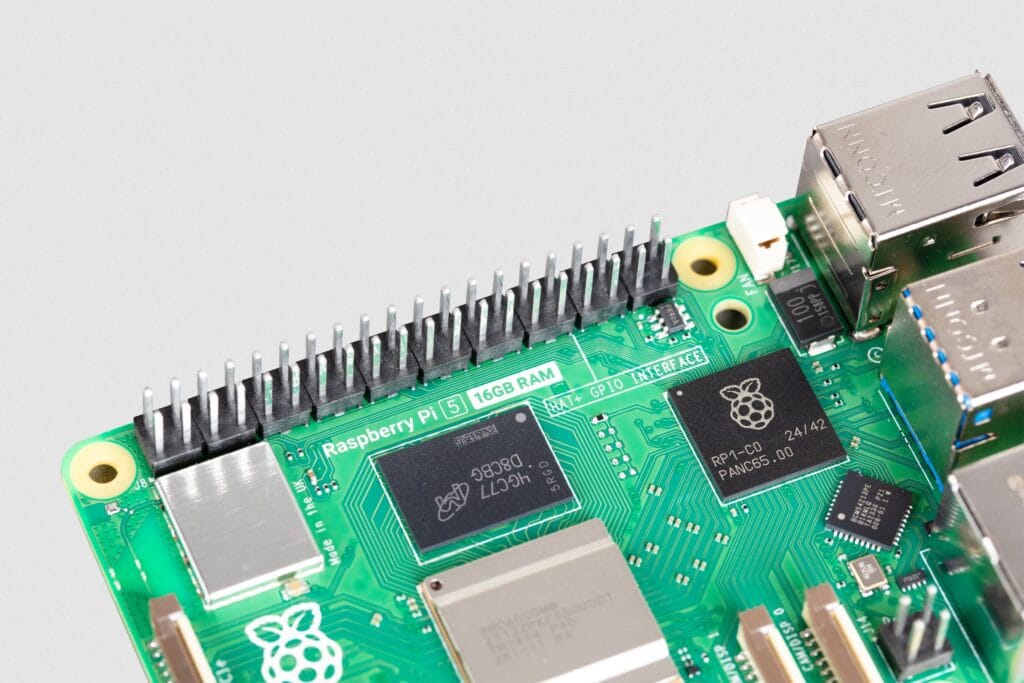The Raspberry Pi Foundation has announced the launch of its new 16GB RAM variant of the Raspberry Pi 5, available for 120 dollars. This model joins the previous options of 2GB, 4GB, and 8GB, expanding possibilities for users who require enhanced performance for advanced applications. Additionally, the foundation has introduced an innovative carbon removal credit initiative to mitigate the environmental impact of its products.
A Step Towards More Demanding Applications
The Raspberry Pi 5, originally launched in 2023, has proven to be a versatile tool for a wide range of uses. However, with the introduction of the 16GB variant, the foundation aims to address more complex demands such as advanced language models and computational fluid engineering.
“The threefold performance leap between the Raspberry Pi 4 and the Pi 5 opens doors to applications that require greater memory capacity per core. This release addresses the needs of those who use distributions like Ubuntu for advanced desktop tasks,” explained Eben Upton, founder of Raspberry Pi.
The new model takes advantage of the Broadcom BCM2712 processor, which has been optimized to support higher capacity memory. Thanks to collaboration with Micron, a unique package has been developed that incorporates eight 16Gbit LPDDR4X chips, making this innovation possible.
Commitment to the Environment: Carbon Removal Credits
Raspberry Pi not only seeks to be a leader in technological accessibility but also in sustainability. Through the Raspberry Pi Carbon Removal Credits, buyers can mitigate the 6.5 kg of CO₂ equivalent associated with the manufacturing, shipping, and disposal of each device for an additional cost of 4 dollars. These credits fund carbon capture using the Accelerated Rock Weathering (ARW) technique.
How Does Accelerated Rock Weathering Work?
ARW accelerates a natural process in which carbon dioxide combines with minerals to form stable compounds. By spreading crushed rock, such as basalt, over agricultural land, the surface area in contact with CO₂ is increased, reducing carbon capture times from millions of years to decades. In addition to capturing carbon, this practice improves soil health and reduces the need for fertilizers, with collateral benefits such as increased agricultural productivity.
According to studies conducted with Newcastle University, the application of basalt not only captures carbon but also helps reduce ocean acidity due to the bicarbonates released during the process.
A Model for the Future of Carbon
Unlike traditional carbon offset approaches, which often rely on past actions such as tree planting, Raspberry Pi is funding a capture process that will begin now and develop over the coming decades. This allows for greater transparency and scalability in the fight against climate change.
“We believe that accelerated rock weathering is one of the most rigorous and scalable strategies for addressing carbon emissions,” stated Upton. “Our hope is that this effort inspires other organizations to adopt emerging technologies that can make a significant difference in our lifetimes.”
The Impact of the 16GB Raspberry Pi 5
The 16GB model is designed to meet the needs of professional and educational applications that require greater processing power and memory, such as scientific simulations, artificial intelligence development, and advanced graphic design. Like the other Raspberry Pi models, it offers an energy-efficient solution, with an average of 2–3W in idle and less than 10W under full load, significantly reducing the carbon footprint compared to traditional PCs.
Availability and Outlook
The 16GB Raspberry Pi 5 is now available through authorized distributors. With this launch and its environmental initiative, the foundation demonstrates its commitment to technological innovation and sustainability, reaffirming its position as a leader in developing accessible and responsible tools for a new generation of creators and users.
via: Raspberry Pi

